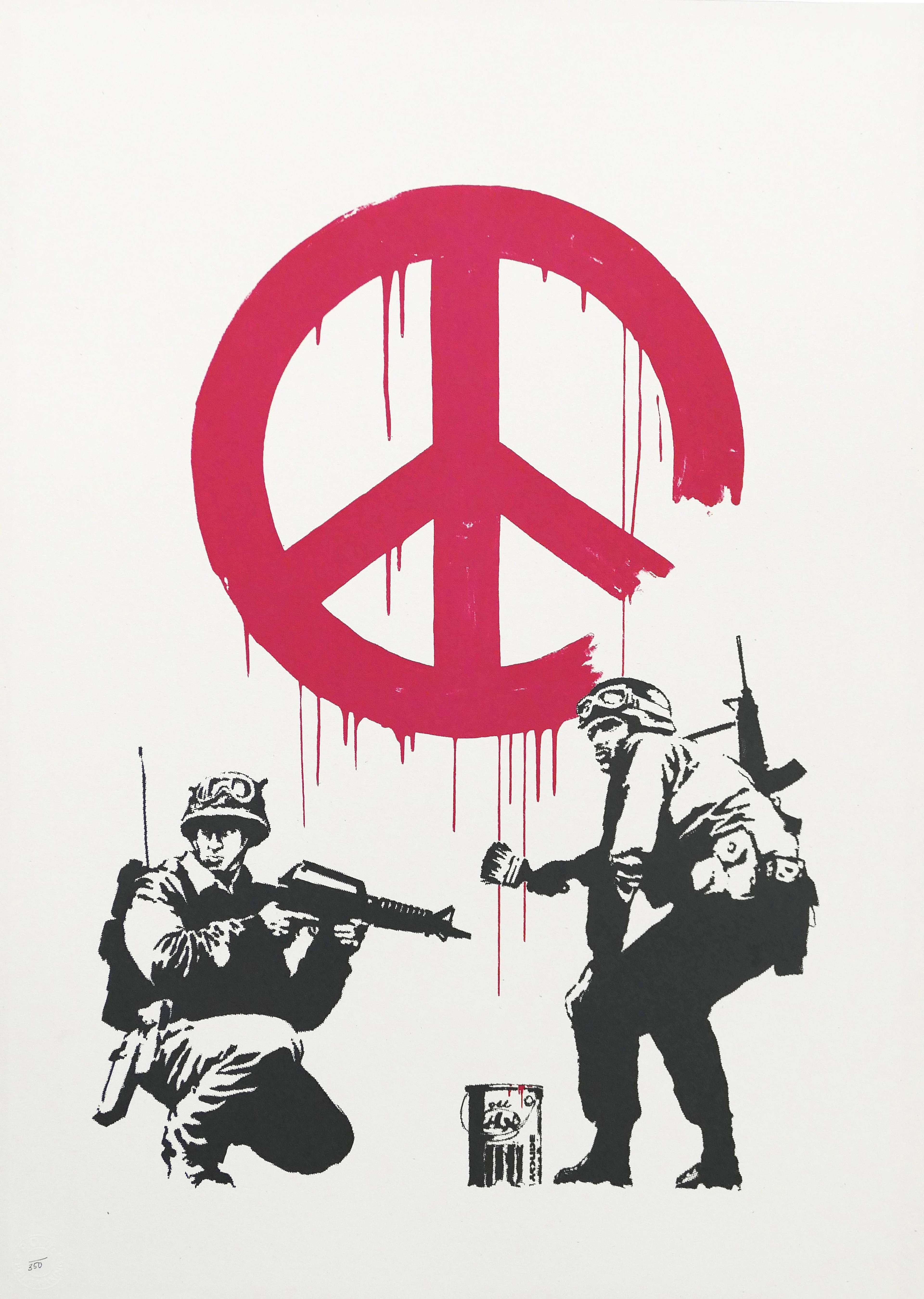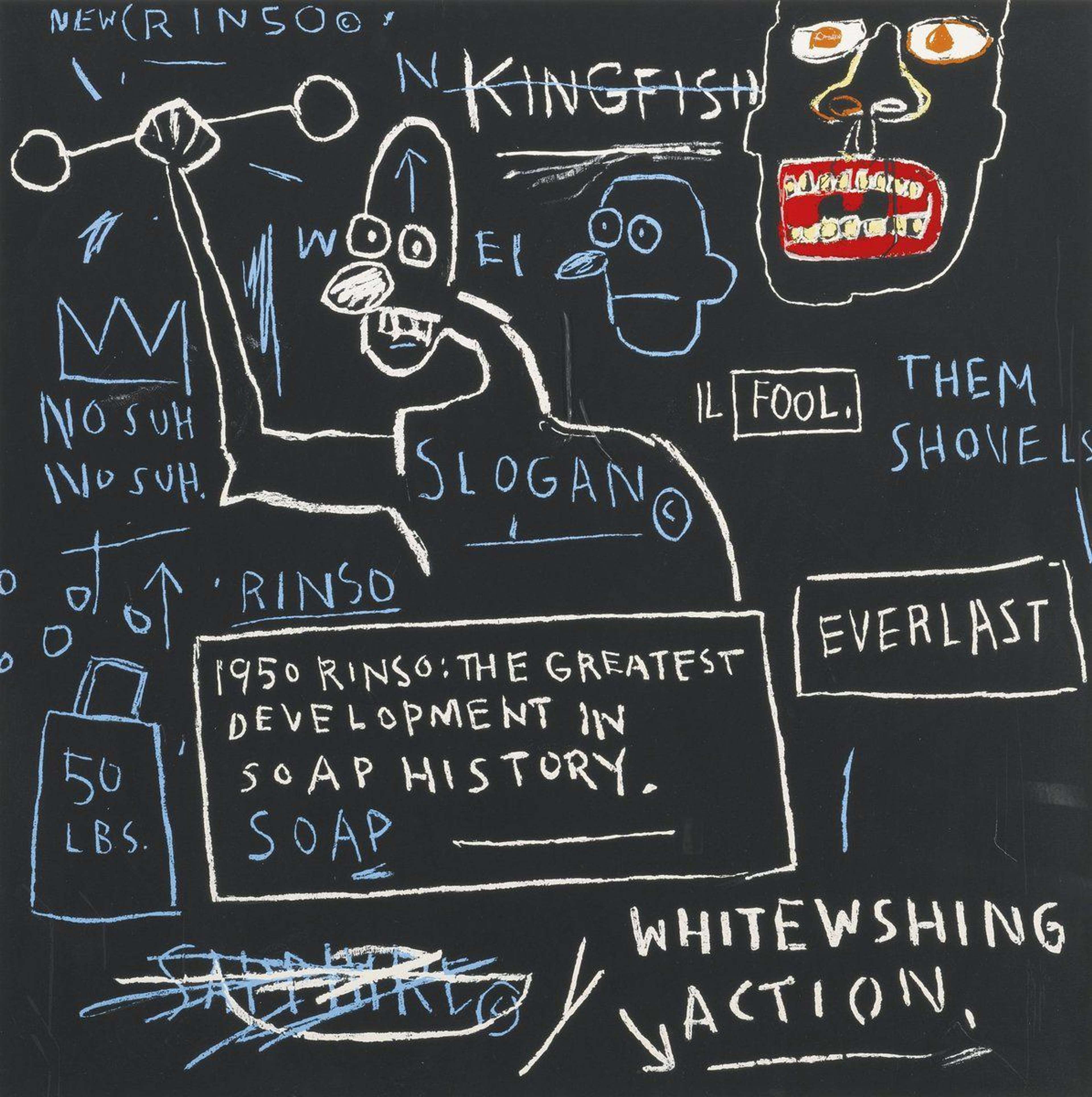Art as Activism: How Protest Art Challenges the Status Quo
 Liberty © Jean-Michel Basquiat 2017
Liberty © Jean-Michel Basquiat 2017Live TradingFloor
Art has always been a powerful tool for social and political change. From the earliest cave paintings to contemporary Street Art, artists have used their work to express their views on society and the world around them. Typically created in response to social or political issues, protest art can take many forms, including paintings, sculptures, murals, posters, and street art.
Today, the capsule of protest art spans galleries, museums, public spaces, and social media. In this article, we take a look at the history and evolution of protest art, its impact on society, and the role of the artist in social and political movements. We’ll also spotlight specific artists who have pioneered the use of art as a tool for social change.
 Image © Wikipeda / Black Square © Kazimir Malevich 1915
Image © Wikipeda / Black Square © Kazimir Malevich 1915The History and Evolution of Protest Art
Protest art has a long and rich history that dates back centuries. From the French Revolution to the Civil Rights Movement, protest art has played a vital role in shaping society and shifting perspectives.
Throughout history, artists have used their work to challenge the status quo and inspire change. The earliest examples of protest art can be found in ancient Egypt, where artists used their work to criticise the pharaohs and the ruling class. In ancient Greece, artists used their work to challenge the political and social norms of the time.
During the Renaissance, artists began to use their work to express views on religion and politics. The Italian artist Michelangelo created some of the most famous protest art of the time, including his sculpture of David, which was seen as a symbol of resistance against the powerful Medici patronage in the city of Florence.
In the 20th century, protest art became more prevalent as artists began to use their work to comment on an epoch of social and political upheaval. Ukrainian-born artist Kazimir Malevich created some of the earliest examples of abstract protest art in his painting Black Square, which was seen as a rejection of traditional art forms: the breaking point between representational art and the abstract era.
 Image © MoMA / Flag © Jasper Johns 1954-55
Image © MoMA / Flag © Jasper Johns 1954-55During World War I and World War II, artists used their work to protest against the rise of fascism and global conflict. A famous collective was the Dada artists of World War I, including Marcel Duchamp, Tristan Tzara, Hans Arp and Hannah Höch. A defining characteristic of their style was the use of everyday objects. Duchamp’s use of a urinal in his art was a controversial move that offended even his contemporaries. Other artists were more explicit about their aversion to the conflict of the era. In 1924, the German artist Otto Dix created the series Der Krieg (“The War"), a raw and haunting set of prints that depicted the horrors of war and its impact on society.
In the 1960s and 1970s, protest art became more widespread as artists began to use their work to challenge issues such as racism, sexism, and Cold War conflicts. The American artist Jasper Johns created some of the most famous protest art of the time without being overtly political, including his painting Flag which is often interpreted as a critique of American nationalism.
Protest art continues to evolve today as artists use their work to challenge issues such as climate change, inequality, and social justice. Street artists have become synonymous with the ethos of protest, with a notable artist being Banksy who is known for his politically charged murals that challenge authority and inspire change.
Art as Activism: The Role of Artists in Social and Political Movements
Artists have a key role to play in social and political movements, utilising their work as a medium to express their views on the world around them. In an increasingly visual age, art can be a galvanising force for movements and protests.
Protest art has the power to challenge authority in ways that words cannot. Through symbols and expression, protest art often inspires people to action and builds communities. It can be used to raise awareness about social and political issues and to give a voice to marginalised groups.
Artists who create protest art are often seen as activists themselves. For some artists, it is the act of protest that guides and motivates their practice, using their work to challenge the status quo and to address the change they want to see. Many artists who create protest art become the visual symbol of a movement, or are involved in grassroots campaigning outside of their work. A more recent modern example is Artists for the Earth, a group of creatives committed to using art to engage the public with the critical issues of the environment.
 Image © Herbert Behrens / Anefo, CC0, via Wikimedia Commons / Guernica © Pablo Picasso 1937
Image © Herbert Behrens / Anefo, CC0, via Wikimedia Commons / Guernica © Pablo Picasso 1937The Impact of Protest Art: Inspiring Change and Shifting Perspectives
Pablo Piccaso
Pablo Picasso is widely regarded as one of the most influential artists of the 20th century. He is known for his role in the development of Cubism, a movement connected to his political activism. Picasso's work often reflected his views, and he was a vocal critic of the war and violence that marked the social context of his most active years.
One of his most famous works is Guernica, a powerful anti-war painting that depicts the horrors of the Spanish Civil War. The work was created in response to the brutal bombing of the Spanish town of Guernica by German and Italian warplanes during the Spanish Civil War, leading to numerous civilian casualties. The painting is a powerful anti-fascist statement that depicts the horrors of war and the suffering of innocent civilians. The painting has become an iconic symbol of peace, inspiring generations of artists to use their work as a form of social and political protest.
Jean-Michel Basquiat
Jean-Michel Basquiat was an American artist who rose to fame in the 1980s. He is known for his graffiti-inspired paintings that often engage with issues surrounding racism and inequality. Basquiat's work challenged the status quo and incited a powerful social commentary on the struggles of marginalised social groups.
One of his most acutely political works, Defacement (The Death of Michael Stewart), is a tribute to Michael Stewart, a young black artist who was beaten to death by New York City police officers in 1983. The painting depicts Stewart's face with the words 'It Could Happen to Anybody' written above it. The work captures Basquiat’s awareness of the threat of policing to young black men like him, and the terror that came with it.
Basquiat's work has inspired generations of artists to use their work as a form of social and political protest. His legacy continues to inspire artists around the world to use their work to address issues of race, inequality, and social justice.
 Image © Whitney / Ignorance = Fear / Silence = Death © Keith Haring 1989
Image © Whitney / Ignorance = Fear / Silence = Death © Keith Haring 1989Keith Haring
Keith Haring was an American artist known for his bold, colourful murals that often addressed issues such as AIDS, drug addiction, and nuclear disarmament. Emerging from the graffiti subculture of New York in the 1980s, Haring's work was often seen as controversial due to its engagement with polarising issues of the time.
Diagnosed with AIDS in 1988, Haring’s art was a key cultural artefact that highlighted the pain and politics of the crisis. One of his most famous works, Ignorance = Fear / Silence = Death, is a direct and unapologetic statement about the AIDS epidemic. The painting features a pink triangle with the words "Silence = Death" written above it.
Haring's burgeoning career was cut short by his death in 1991, but his legacy is an ode to the power of protest art. He established the Keith Haring Foundation in 1989, an organisation that continues Haring's artistic and philanthropic legacy through the circulation of his work and archives, as well as by awarding grants to children in need and those affected by HIV/AIDS. Haring’s visual style also forms a central tenet in the legacy of Pop Art.
Banksy
Banksy is an anonymous street artist who is known for his politically charged artworks displayed in public locations. Grappling with issues such as war, poverty, and inequality, his work has been featured in galleries around the world and has inspired a new generation of street artists to use their work as a form of social and political protest.
Girl With Balloon is Banksy’s most iconic image, depicting a young girl reaching for a heart-shaped balloon, just out of her grasp. Fraught with emotive interpretations—some see the girl as losing the balloon, while others see her as on the verge of catching it—it is an allegory of hope, love, and freedom. It was the motif for a series of stencil murals in London in 2002 but has since become endorsed by social campaigns including the Syrian refugee crisis of 2014.
Banksy’s subversive beliefs also inspired later iterations of Girl With Balloon. In 2018, a 2006 framed painting of the artwork was auctioned at Sotheby's, only to self-destruct moments after the closing bid. Banksy later released a video of the shredding, detailing how the shredder was installed into the frame in case the picture ever went up for auction. The work was subsequently renamed Love Is In The Bin, with the remains ironically selling for even more.
 Image © Phillips / The Papercut Portfolio © Ai Weiwei 2019
Image © Phillips / The Papercut Portfolio © Ai Weiwei 2019Ai Weiwei
Ai Weiwei is a Chinese artist who is known for his politically charged installations and sculptures. Ai's work often addresses issues such as human rights, freedom of speech, and government corruption, where his artistic output even caused him to be detained by the Chinese authorities in 2011. His work has been featured in galleries around the world and continues to capture the attention of millions.
Self-Portrait In Lego (2017) is a leading example of the activism contained within Ai’s oeuvre. First exhibited at the Hirshorn, Self-Portrait In Lego formed part of the monumental installation Trace, a collection of portraits of individuals from around the world considered to be activists, prisoners of conscience, and free speech advocates. Each of these 176 portraits was made from thousands of plastic LEGO® bricks, assembled by hand and exhibited on the floor of the museum.
Ai's work has been the recipient of awards from major organisations, such as Amnesty International. To this day, he continues to fight for human rights, freedom of speech, and democracy in regimes around the world.







